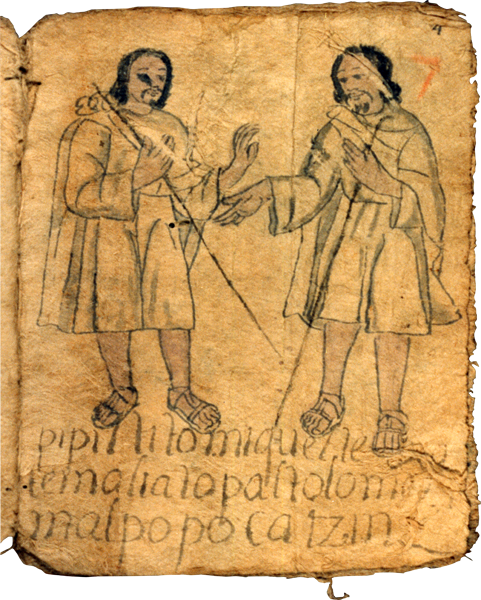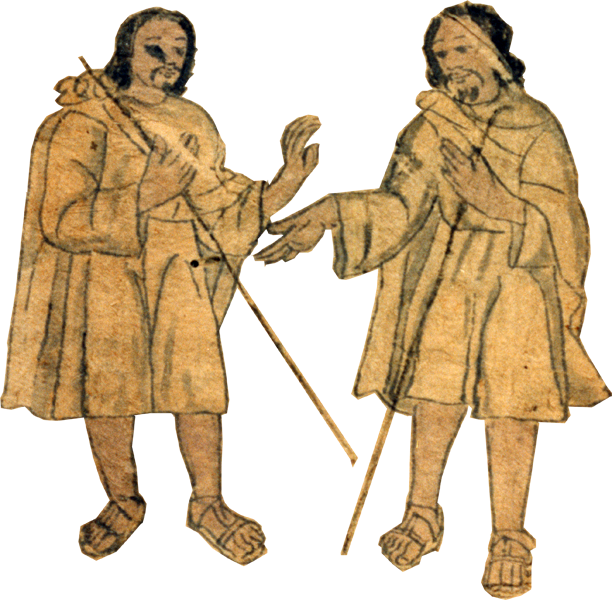two indigenous men standing (colonial attire)
This is a detail, appearing in Book V, folio 4 recto, of two indigenous men standing, wearing sandals and dressed in knee-length, loose-fitting, white-cotton Spanish-colonial style pants and long-sleeved tunics. The men also wear cloaks tied at the right shoulder over their tunics, a symbol of their high status. The men are outlined in black. Their skin is washed with a flesh-tone watercolor. Their hair reaches to their shoulders and appears to turn under at the bottom. Both men have a pencil-thin mustache and a goatee. Both men are gesturing with their hands, suggestive of some degree of authority. Both men also hold a stick that probably represents a staff of office.
The text at the bottom of the page identifies the men as “pipiltin” (nobles), and names them as don Miguel de Santa Maria and don Bartolome Chimalpopocatzin. [SW]
dos hombres indígenas de pie (era colonial)
Detalle de dos hombres indígenas de pie, usando sandalias y vestidos con pantalones de algodón blanco hasta las rodillas y túnicas mangas largas. Los hombres visten capas alrededor de su cuello como símbolo de status social alto. Las figuras están delineadas en tinta negra, y pintadas con acuarelas semejantes al color de su piel. Su pelo llega a los hombros y parece ser ondulado. Ambos poseen un bigote fino y una barba en forma de chive. Los hombres están gesticulando con sus manos, sugieriendo cierto grado de autoridad. Ambos hombres sostienes un palo o bastón, y probablemente son representantes del gobierno.
El texto al principio de la página identifica los hombres como “pipiltines” (nobles) y los nombra don Miguel de Santa María y don Bartolomé Chimalpopocatzin

